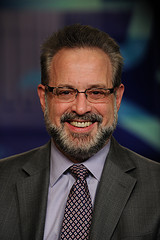San Francisco’s New Approach to HIV Prevention
Topics

With this post, we launch an occasional series, The Strategy in Action: Communities Respond to the National HIV/AIDS Strategy. In these posts, we will spotlight some of the ways that diverse communities from across the U.S. are undertaking efforts to support and implement the National HIV/AIDS Strategy, Director of HIV Prevention and Research at the San Francisco Department of Public HealthExit Disclaimer (SFDPH), shared with us how his city has re-assessed and re-prioritized its HIV prevention efforts; Grant shared this information at a meeting with Federal and community leaders at the U.S. Department of Health and Human Services on March 16.
San Francisco, he explained, has had a fairly stable rate of new HIV infections in the past 10 years—between 500 and 1,000 per year. Leaders from the Health Department and the community recognized that if they were going to achieve the desired further reduction in the number of new HIV infections, they would have to make strategic changes in their prevention approaches. So the Department worked with its Community Planning Group over the course of a year to thoroughly and thoughtfully review and reprioritize the city’s HIV prevention plan. Last year, they released a 336-page five-year HIV prevention planExit Disclaimer. After analyzing their local epidemiology data, reviewing the scientific literature describing advances in prevention science, obtaining input from a variety of community sources, and considering their budget, they agreed they could do a better job if they targeted resources toward several priorities. These included:
- A significant scale up of HIV testing to achieve greater HIV status awareness, particularly among the population groups bearing the highest burden of HIV in their community (identified through local epidemiology to include men who have sex with men, injecting drug users, and transgender women). As part of the effort to scale up testing, the SFDPH now urges all gay men and all injecting drug users to be tested every six months. They are working with many different providers to increase opportunities for HIV testing in venues ranging from doctors’ offices and emergency rooms to community-based organizations and mobile outreach vans.
- Prevention with positives, which involves strategies and interventions that addresses the specific prevention needs of persons living with HIV. This reflects San Francisco’s deliberate and thoughtful linkage—or “marriage” as Grant called it—of prevention and care activities. Looking at prevention and treatment as a continuum rather than as two separate and distinctly administered activities has become a core component of the city’s response to HIV. The SFDPH now requires care programs to show that those who have been recently diagnosed with HIV and linked to care are on appropriate antiretrovirals (ARVs) and demonstrate a reduced viral load at 6 and 12 months after beginning treatment. Not only are lower viral loads associated with better health outcomes, they can also translate into a lower risk of transmitting HIV. San Francisco can monitor viral load at a “community” level because California requires reporting of viral load for all HIV-positive patients.
- Addressing drivers of HIV through health education and risk reduction programs. Addressing drivers and cofactors of HIV through behavioral interventions is a critical component of San Francisco’s approach to HIV prevention. Drivers associated with the greatest number of new HIV infections in San Francisco include cocaine/crack, methamphetamine, poppers, gonorrhea, heavy alcohol use, and multiple partners. Using behavioral interventions targeting these factors among populations at high risk for HIV infection is likely to reduce HIV transmission and acquisition in the city. Indicators of success for programs focusing on such drivers include linkage to testing, linkage to care, and reduction in drivers.
These are just three of the priorities articulated in San Francisco’s thoughtful and ambitious five-year plan. Interestingly, though the San Francisco HIV Prevention Plan and the National HIV/AIDS Strategy were developed independently, they share a number of significant principles, priorities and actions. These include:
- Intensifying HIV prevention efforts in communities where HIV is most heavily concentrated
- Expanding targeted efforts to prevent HIV infection using a combination of effective, evidence-based approaches;
- Expanding HIV testing to reduce new infections;
- Expanding prevention activities with HIV-positive individuals;
- Facilitating linkage to and maintenance in care;
- Enhancing measurements of health outcomes;
- Promoting a holistic approach to health that includes prevention of HIV-related co-morbidities such sexually transmitted infections (STIs), and hepatitis B and C; and
- Engaging all levels of government, community partners, and people living with HIV/AIDS in the response to HIV/AIDS.
In the brief video below, Grant shares some of the San Francisco experience and lessons that might help other communities to achieve the goals of the National HIV/AIDS Strategy.